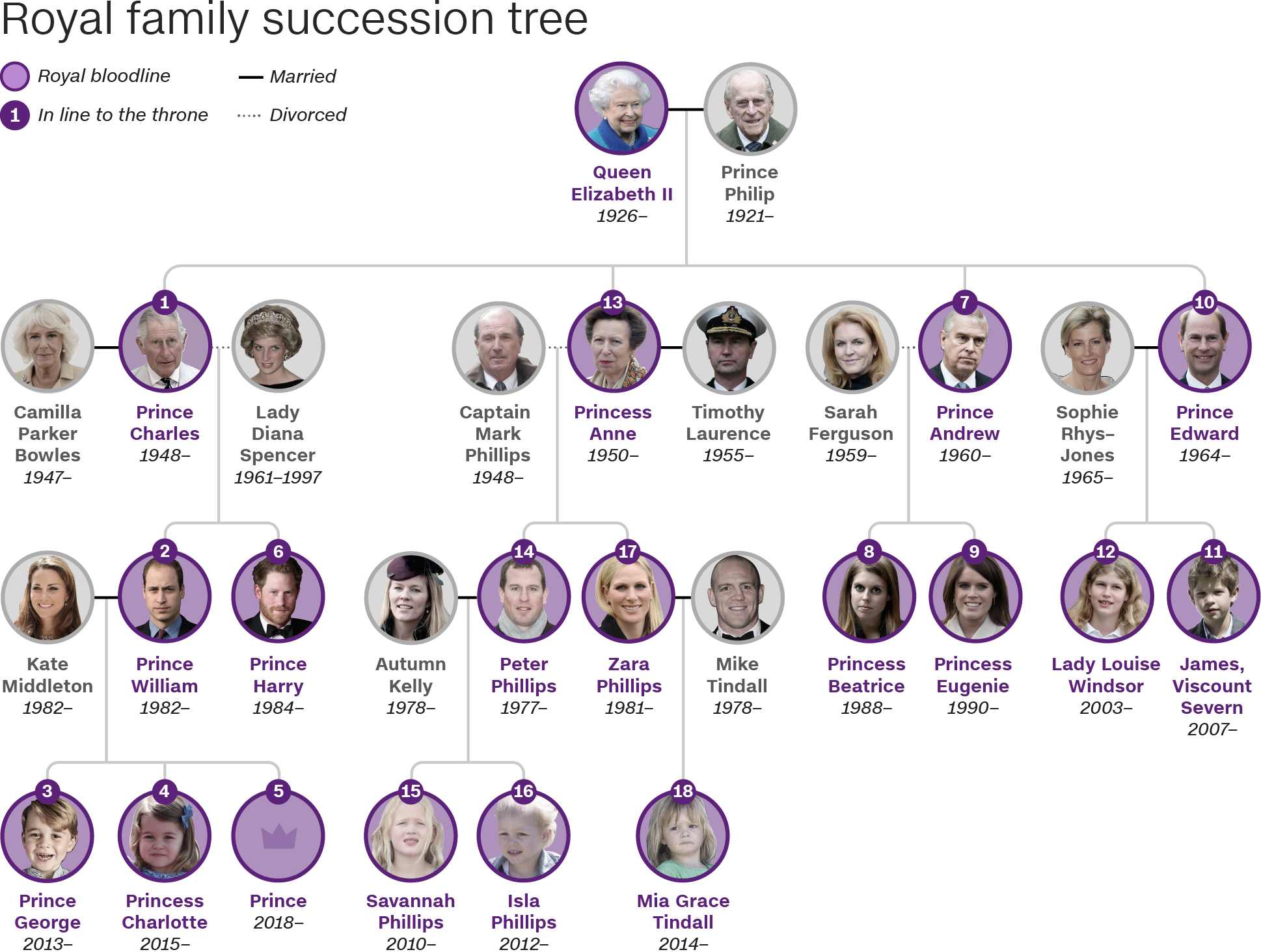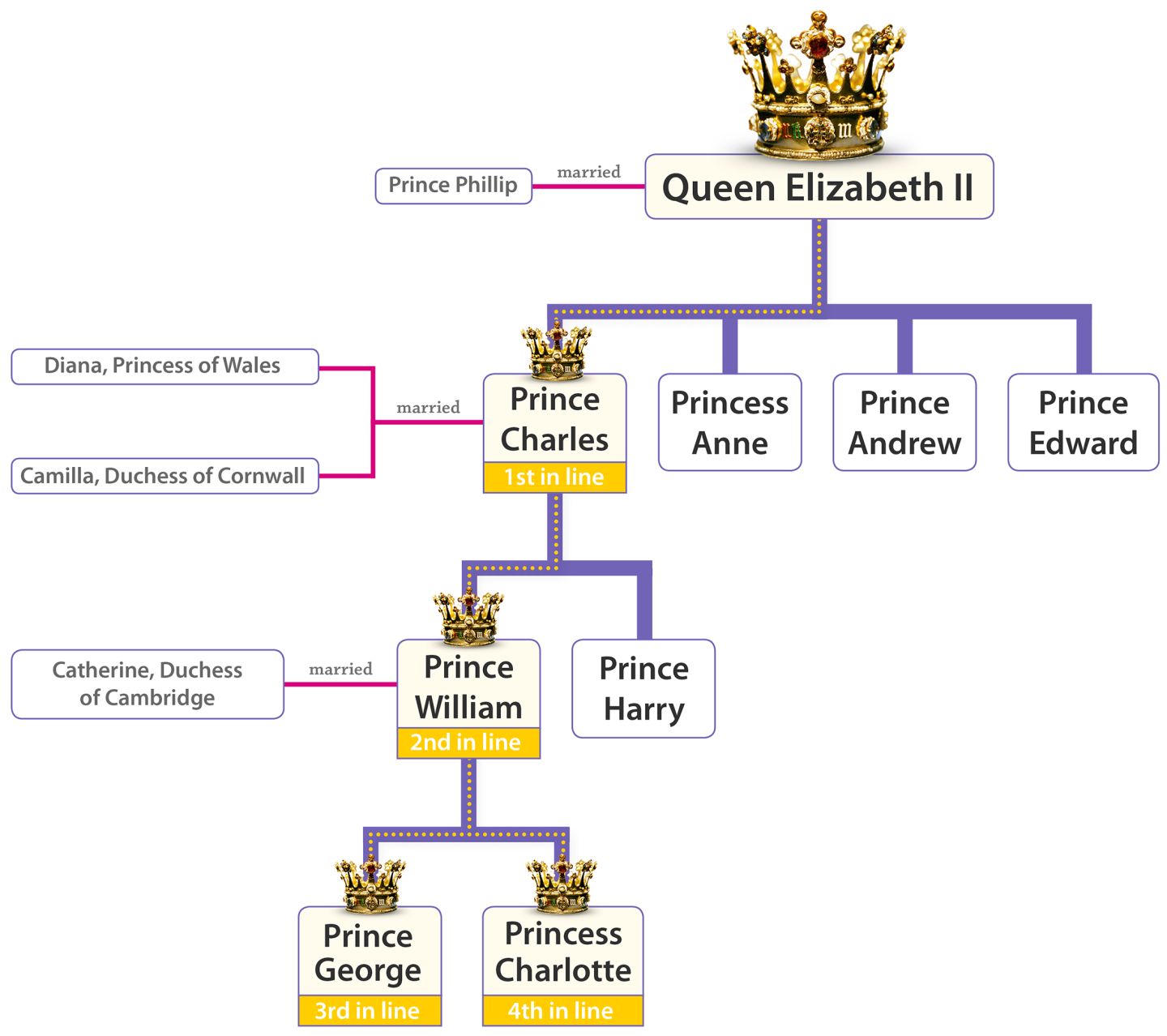Royal Succession: Exploring Thrones And Dynasties Through History
Ever wondered who gets to wear the crown next? The intricate rules governing royal succession are more than just tradition; they're the bedrock of monarchical stability. Understanding these rules is crucial to grasping the power dynamics within royal families and the very future of kingdoms.
Across the globe, different monarchies adhere to diverse systems of determining who will inherit the throne. From strict primogeniture to complex familial agreements, the path to becoming king or queen is rarely straightforward. These systems, steeped in history and often influenced by political considerations, shape not only the lives of those in line for the throne but also the destinies of nations.
Let's delve into the specifics of several prominent royal families and their unique approaches to succession. In Saudi Arabia, for example, the process is determined within the House of Saud. Upon the death of a king, the crown prince typically ascends to the throne. However, the selection of the next crown prince involves a less formal system of agnatic seniority among the sons of Ibn Saud. Notably, this system has seen deviations, with some family members being bypassed for various reasons, highlighting the role of political maneuvering within the succession process.
In stark contrast, Japan's imperial line adheres to a strict male primogeniture system. Only male descendants of the imperial family are eligible to inherit the Chrysanthemum Throne, a symbolic term derived from the chrysanthemum flower, which has been the emblem of the imperial family since the eighth century. This unwavering commitment to male lineage has, in recent years, sparked debate and calls for reform, given the dwindling number of male heirs.
The British monarchy, perhaps one of the most globally recognized, has undergone significant changes to its succession rules in recent times. Historically, male primogeniture was the norm, meaning that younger sons would take precedence over older daughters in the line of succession. However, this changed with the Succession to the Crown Act 2013. This landmark legislation ended male primogeniture, ensuring that birth order, regardless of gender, determines the line of succession for those born after October 28, 2011. The act also removed the disqualification of those who marry Roman Catholics, further modernizing the rules of succession.
The Succession to the Crown Act (2013) amended provisions set forth in the Bill of Rights (1689) and the Act of Settlement (1701), signaling a monumental shift in the established order. Before this act, royal male offspring were given preference in inheriting the throne, even if they were younger than their sisters. Now, it's all about the order of birth, regardless of whether you're a prince or a princess. Harris explained that this act ended the tradition of male primogeniture, allowing older daughters to take their rightful place in the line of succession.
To fully grasp the intricacies of the British line of succession, it's helpful to consider its historical context. Following the Norman Conquest of England in the 11th century, the rules governing succession have evolved through various acts of Parliament and royal decrees. The succession to Edward III, for instance, was governed by his entail to the crown in 1376. Upon his death on June 21, 1377, the line of succession to the English throne was headed by Richard of Bordeaux, Prince of Wales, the only son of Edward III's deceased eldest son, Edward, the Black Prince.
Today, with King Charles III on the throne, Prince William has assumed the role of heir apparent. This marks a new generation in the royal family tree, with Prince George, Princess Charlotte, and Prince Louis following their father in the line of succession. The royal line of succession is essentially the order in which members of the British royal family stand in line to inherit the throne.
Children of the sovereign are always first in order, followed by the nearest blood relative should a ruling monarch be childless. The succession to the throne is regulated not only through descent but also by parliamentary statute. The current line of succession to the British throne is as follows: HRH Prince William, Prince of Wales.
Beyond the specifics of individual monarchies, certain overarching principles govern royal succession in general. A hereditary monarchy, for example, is a form of government and succession of power in which the throne passes from one member of a ruling family to another member of the same family. A series of rulers from the same family would constitute a dynasty. Historically, this has been the most common type of monarchy and remains the dominant form in extant monarchies.
In Sweden, the rules of succession also dictate who may inherit the throne. The Swedish King, the Queen, the Crown Princess, her siblings, and all their royal spouses and children are part of the royal family. The complete succession to the throne can be found on the official website of the Swedish Royal Court.
The British monarch, as head of the Protestant Church of England, is subject to the requirement that only Protestants can be in the line of succession. This reflects the historical and religious context of the British monarchy. The Spanish monarchy, constitutionally referred to as "La Corona," comprises the reigning monarch, currently King Felipe VI, their family, and the royal household. This institution supports and facilitates the sovereign in the exercise of his duties and prerogatives.
While standard guidelines for succession exist, problems can arise, particularly when there is a lack of clear direction as to who should ascend the crown. This is especially true when multiple candidates are vying for the throne, making it difficult to decide who should rightfully rule the country. Isabella and Ferdinand's marriage in 1469 marked the historic unification of Spain, with Isabella being the heir to the Crown of Castile and Ferdinand the heir to the Crown of Aragon.
The lack of clear direction as to who should ascend the crown, especially when multiple candidates are waiting in the wings for their shot, can make it incredibly difficult to decide who should rightfully rule the country. Isabella and ferdinand's marriage in 1469 marked the historic unification of spain. Isabella was the heir to the crown of castile, and ferdinand was the heir to the crown of aragon.
See family tree of english monarchs, family tree of scottish monarchs, and family tree of welsh monarchs. This also includes england, scotland and wales; All part of the united kingdom as well as the french norman invasion. For a simplified view, see: Family tree of british monarchs.



Detail Author:
- Name : Prof. Jakayla Von I
- Username : qwolf
- Email : ankunding.leatha@yahoo.com
- Birthdate : 1985-12-01
- Address : 2328 Antonio Ridges Apt. 851 Terrillborough, MN 23155-6988
- Phone : +1-347-979-4959
- Company : Baumbach-Champlin
- Job : Shoe Machine Operators
- Bio : Veniam expedita distinctio ut ex pariatur. Harum est quidem ducimus ut ut dolor.
Socials
tiktok:
- url : https://tiktok.com/@erwin.waelchi
- username : erwin.waelchi
- bio : Sit et neque et sapiente.
- followers : 3280
- following : 1888
instagram:
- url : https://instagram.com/erwinwaelchi
- username : erwinwaelchi
- bio : Eius et nostrum pariatur rem. Iure culpa aliquid molestiae incidunt aut qui.
- followers : 5262
- following : 159
